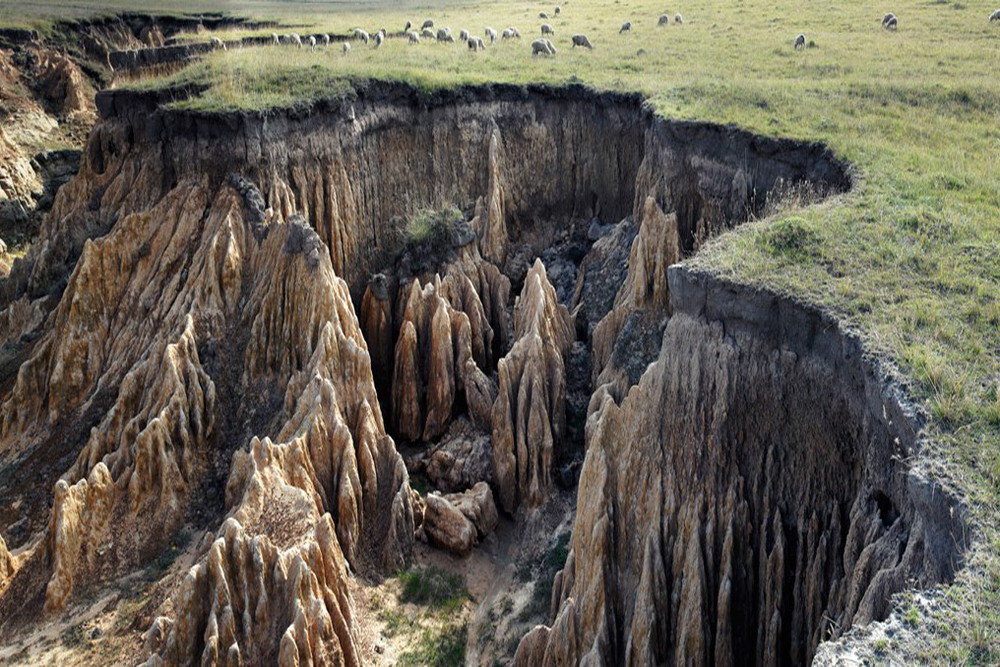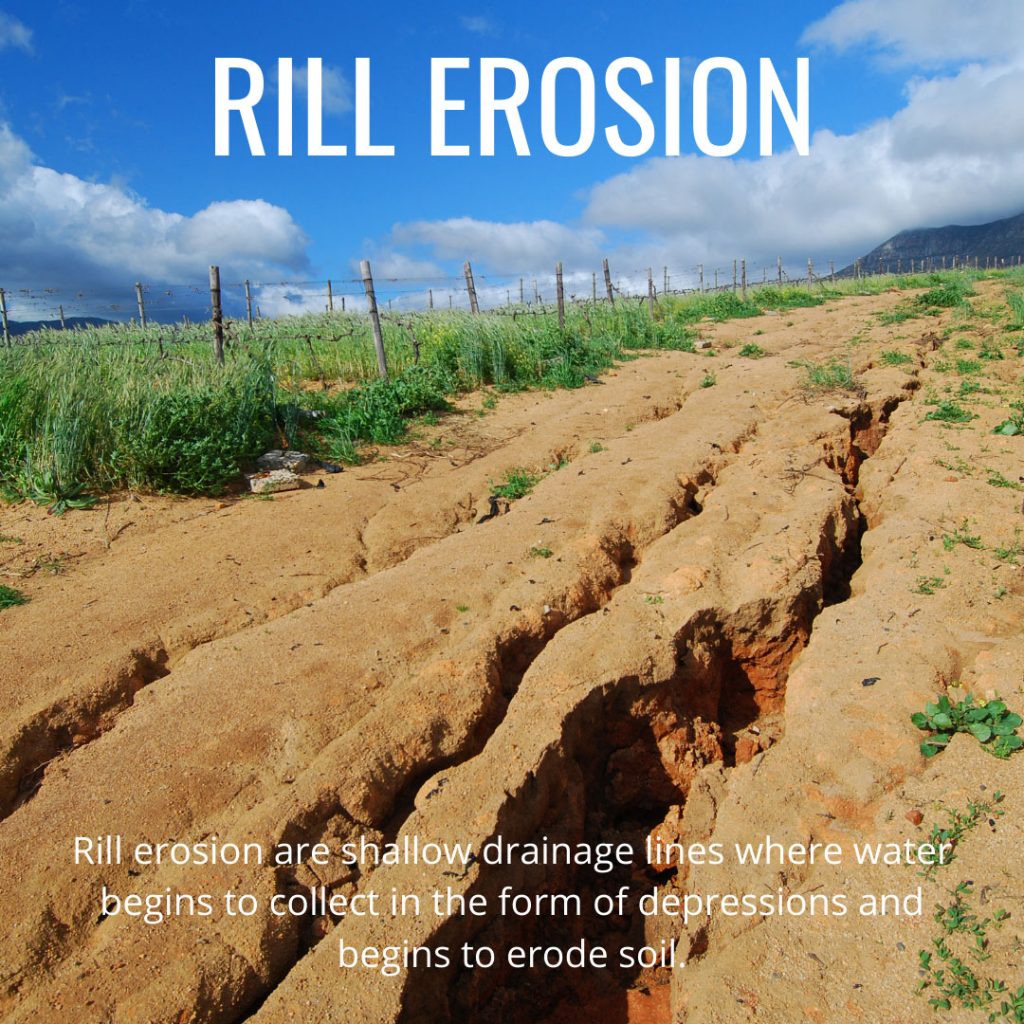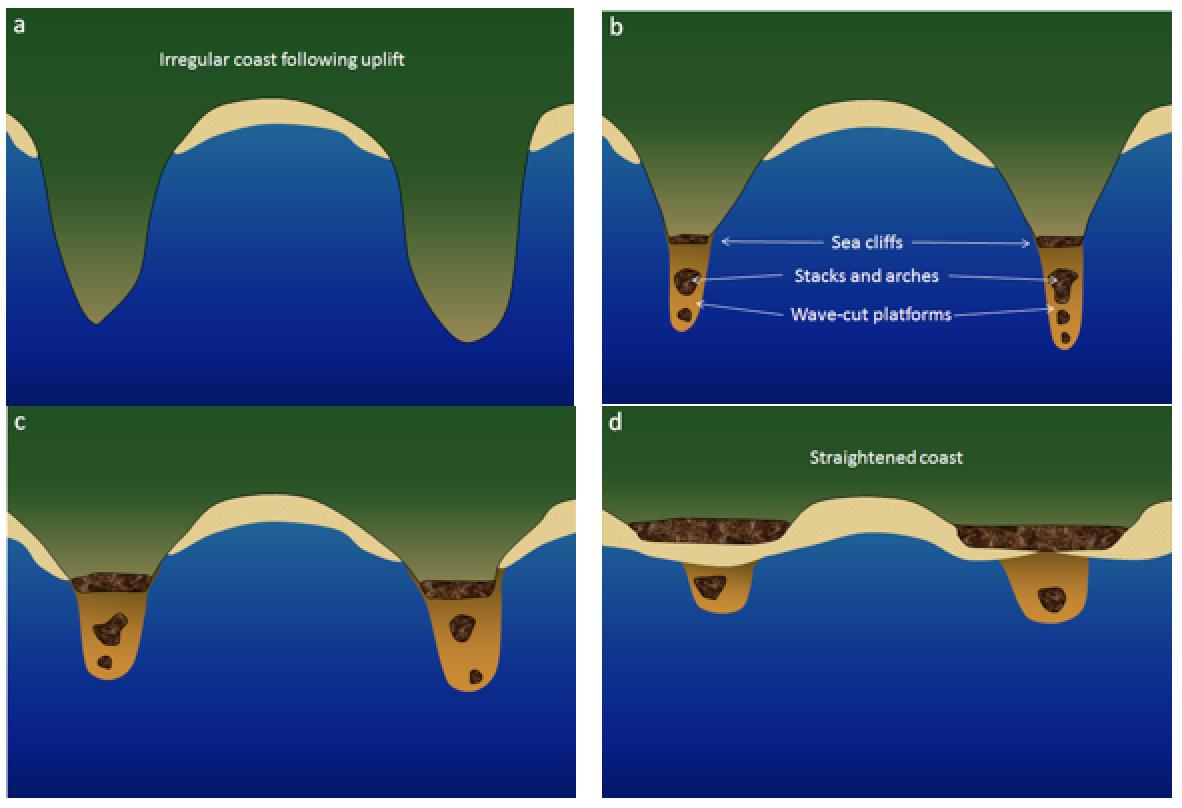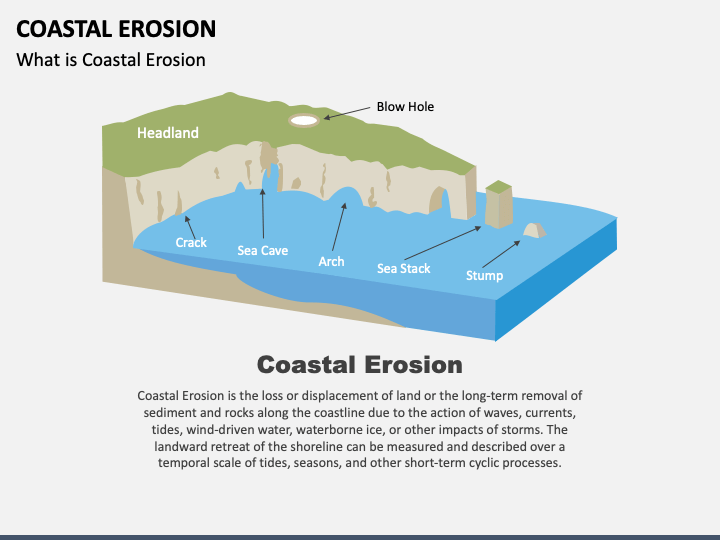Erosion is one of those natural processes we don’t think much about — until it starts to cause problems, like flooding, loss of soil, or even changing the landscape we know. But what is erosion, exactly? And how does it work to shape the world around us?

What Is Erosion? A Simple Explanation
Before we get into the nitty-gritty of the 4 stages of erosion, let’s start with the basics: What is erosion?
At its core, erosion is the process by which natural forces like wind, water, ice, and even biological activity wear down and transport materials from one place to another. It’s a gradual yet powerful force that shapes landscapes, alters ecosystems, and can have a huge impact on agriculture and human settlements.
Imagine you have a sandcastle on the beach. When the waves roll in, they wash away bits of sand. Over time, the waves might completely wash away your sandcastle. This is erosion at work — but on a much larger scale and with much more force.
Why should we care about erosion?
- Soil Loss: Erosion can strip away the fertile soil that plants need to grow, which can lead to lower crop yields.
- Changing Landscapes: Erosion helps create things like valleys, cliffs, and beaches, constantly reshaping the planet’s surface.
- Flooding and Damage: Unchecked erosion, particularly near rivers or coasts, can lead to flooding, infrastructure damage, and even the loss of entire ecosystems.
In a nutshell, erosion is how Earth’s surface is constantly being worn down and reshaped, piece by piece. But how exactly does it happen? Let’s explore the 4 stages of erosion, which happen step by step, with each stage playing a crucial role in this ongoing process.
The 4 Stages of Erosion: A Detailed Breakdown
Erosion isn’t a single event, but a multi-step process that takes place over time. The 4 stages of erosion — weathering, transportation, deposition, and landform evolution — work together to sculpt our planet. Each stage plays its part in breaking down materials, moving them around, and eventually settling them into new places.
Let’s walk through each stage of erosion in detail.
1. Weathering – The First Stage of Erosion
When we talk about erosion, we often skip straight to the movement of materials. But before anything can move, it has to be broken down first. That’s where weathering comes in.
What is weathering?
Weathering is the process of breaking down rocks and minerals into smaller pieces. This can happen without the material actually moving, which means that weathering is technically a precursor to the movement stage (erosion). You can think of it like getting your rock collection ready to be carried off by the wind, water, or ice.
There are three main types of weathering:
- Physical Weathering: This happens when rocks break down into smaller pieces through physical forces. Common examples include:
- Freeze-thaw: Water seeps into cracks in rocks, and when it freezes, it expands, causing the rock to break apart.
- Abrasion: This happens when rocks or other particles rub against each other, breaking pieces off (think of rocks rolling around in a river).
- Exfoliation: When layers of rock peel off due to temperature changes, kind of like how an onion’s skin sheds in layers.
- Chemical Weathering: This type involves chemical reactions that break down the minerals in the rocks. A classic example is oxidation, where iron in rocks reacts with oxygen and forms rust (which weakens the rock).
- Carbonation: When rainwater (which contains carbonic acid) reacts with minerals like calcium carbonate, causing limestone to dissolve and erode.
- Biological Weathering: Plants, fungi, and animals can also contribute to weathering. Roots of plants can grow into rocks, breaking them apart, while animals might burrow and disturb the soil.
Why is weathering so important for erosion?
Without weathering, materials would remain large and intact, unable to be transported by natural forces like water or wind. Weathering is the first step in breaking rocks and minerals into smaller, more mobile pieces. So, in a way, weathering is the starting point for erosion to begin its work.
Fun Fact:
Did you know the Grand Canyon started with weathering? The rocks didn’t just magically erode into those magnificent cliffs and valleys overnight. It took millions of years of weathering (and erosion, of course) to get us the Grand Canyon we know today!
2. Transportation – Moving Eroded Materials
Once weathering has broken down rocks and minerals into smaller particles, they’re ready to be transported — this is the second stage of erosion. Transportation refers to the movement of these materials from one place to another. The forces of nature can carry materials over long distances, from mountain tops to the ocean.
How are materials transported?
Here’s where the power of wind, water, and ice really shines:
- Water: Rivers, streams, and rainfall are the primary movers of eroded materials. Water carries rocks, soil, and sediment downhill and eventually deposits them in lower areas like river deltas or oceans.
- Rivers can carry everything from fine sand particles to large boulders.
- Rainwater can wash smaller particles like clay and silt into nearby streams.
- Wind: Wind is especially powerful in desert environments, where it can blow sand and dust over vast distances, creating sand dunes and shifting coastal beaches.
- Ice (Glaciers): Glaciers, with their massive ice sheets, can carry huge rocks and debris over land, scratching and grinding the surface beneath them. As glaciers move, they often drag boulders and soil with them, leaving behind marks that can last for millennia.
Key factors influencing transportation:
- Velocity: The speed at which water or wind moves. Faster-moving water can carry heavier particles, while slower water might only be able to move finer materials.
- Particle Size: Larger particles (like pebbles or boulders) require more force to move than smaller ones (like sand or dust). So, larger materials are usually transported shorter distances.

3. Deposition – The Process of Erosion Slowing Down
Now that materials have been weathered and transported, the next stage in the erosion process is deposition. This is where the eroded materials finally come to rest after being carried by wind, water, or ice.
What is deposition?
Deposition occurs when the forces of nature, like wind or water, slow down enough for the particles to settle. It’s basically the “resting phase” in the erosion cycle, when all that hard work of moving materials pays off and the particles drop out of the transporting medium. These materials can form new landforms, like beaches, riverbeds, sand dunes, or even mountain foothills.
Where does deposition typically occur?
Deposition happens in areas where the transporting force (wind, water, or ice) loses its energy. For example:
- Rivers and Streams: As a river slows down (such as when it reaches a flatter area or the mouth where it meets the sea), it deposits the sediment it’s been carrying. This is how river deltas form, such as the Mississippi Delta.
- Beaches: Waves carry sand and other materials to the shore, where they’re deposited to create beaches.
- Desert Sand Dunes: Wind slows down when it hits obstacles like rocks or vegetation, leading to the deposition of sand into dunes.
- Glacial Deposition: When glaciers melt, they leave behind the material they’ve carried with them, creating moraines and glacial till.
What factors control where deposition occurs?
The placement of deposited materials depends on several factors, including:
- Speed of the transport medium: Faster-moving water or wind can carry larger particles for longer distances. When these forces slow down, larger particles (like rocks or gravel) tend to settle first, while finer particles (like sand or silt) settle later.
- Particle size: Larger particles settle faster than smaller ones. For instance, pebbles and rocks drop out of a river’s flow much sooner than sand or silt, which can travel further before settling.
- Obstructions or barriers: Natural features like rocks, vegetation, or changes in elevation can slow down wind or water, causing deposition to occur at these points.
Fun Fact:
The famous Great Barrier Reef in Australia, a biodiversity hotspot, has been formed in part by the deposition of coral reefs. Over thousands of years, corals have deposited layers of calcium carbonate, creating a vibrant marine ecosystem.
4. Landform Evolution – The Final Stage of Erosion
Once erosion has weathered, transported, and deposited materials, we’re left with landforms — the last stage of the erosion process. This stage is about how deposition and other processes shape the landscape over time, gradually transforming the environment in profound ways.
What happens after deposition?
After materials are deposited, they start to accumulate in layers. Over time, these layers of sediment can form sedimentary rock through compaction and cementation. For example, sandstone forms from layers of sand deposited over millions of years.
These layers of deposited material don’t just sit there; they get weathered again or even moved by other forces, continuing the cycle of erosion. So, while deposition might seem like the end of the process, it actually sets the stage for landform evolution — the way landscapes are transformed through further erosion and deposition.
How do these landforms evolve over time?
Some landforms evolve relatively quickly, while others take millions of years to fully develop. Here’s how deposition contributes to landform evolution:
- Riverbeds and Floodplains: When a river deposits materials in a flat area, over time, it can create a floodplain — a wide, level area where water regularly floods and deposits sediment.
- Coastal Landforms: Beaches and cliffs shaped by wave erosion evolve through the process of deposition as waves carry sand and gravel.
- Canyons and Valleys: Deposition and erosion work in tandem to shape canyons, valleys, and cliffs, as rivers carve out these features through constant movement of water and sediment.
- Mountain Foothills and Plains: In mountain areas, as glaciers melt, they deposit material that can build up to create moraines or plains.
Fun Fact:
The Grand Canyon, one of the most famous natural landmarks on Earth, was formed over millions of years by erosion, but it continues to evolve through ongoing weathering and the deposition of materials by the Colorado River.
The Big Picture: How the 4 Stages of Erosion Shape the Earth
To sum it all up: erosion isn’t a quick, singular process — it’s a dynamic, ongoing cycle of change that shapes our planet over long periods. The 4 stages of erosion (weathering, transportation, deposition, and landform evolution) work together to break down rocks, move materials around, and create the landscape we see today.
These stages don’t just happen in isolation; they work in tandem, often creating landforms that evolve over millennia. For example, the erosion of mountains leads to the transportation of sediment into valleys, which eventually gets deposited and forms new features like river deltas or beaches. Over time, these new features change again, leading to further landform evolution. It’s a never-ending cycle of transformation!
Why Understanding Erosion’s Stages Matters
Now that you know the 4 stages of erosion, it’s easy to see how this process is crucial to the ever-changing landscape of our planet. Whether you’re looking at the rugged cliffs of a coastline or the winding course of a river, erosion has played a role in shaping these features.
But it’s not just about understanding how Earth’s landscape changes. Recognizing the stages of erosion can help us make better decisions about how we interact with the environment. From agriculture to urban planning, understanding erosion can help us protect soil, manage water resources, and prevent natural disasters.
So, next time you see a mountain eroding or a river meandering through a valley, you’ll have a deeper appreciation for the forces at work. And who knows? You might even spot some of the stages of erosion in action right in front of you!

Frequently Asked Questions (FAQs) About the 4 Stages of Erosion
To wrap up our exploration of the 4 stages of erosion, let’s dive into some common questions that often pop up about the topic. Whether you’re a student or just someone curious about how Earth’s surface is shaped, these FAQs will clear up some lingering doubts and provide a bit more insight.
1. What are the 4 stages of erosion?
The 4 stages of erosion are:
- Weathering – Breaking down rocks and minerals into smaller particles.
- Transportation – Moving the eroded materials through wind, water, or ice.
- Deposition – Materials being dropped or settled in new areas when the transporting force slows down.
- Landform Evolution – The creation and transformation of landforms as a result of continued deposition and erosion.
These stages are interconnected and work in a continuous cycle that shapes the Earth’s surface.
2. How do weathering and erosion differ?
It’s easy to confuse weathering and erosion since they’re closely related, but they’re not quite the same:
- Weathering is the process of breaking down rocks and minerals into smaller pieces through physical, chemical, or biological forces. Importantly, this doesn’t involve the movement of materials.
- Erosion, on the other hand, is the transportation of those weathered materials from one place to another, typically by forces like wind, water, or ice.
In short, weathering breaks down materials, and erosion moves them. Both are part of the same cycle, though!
3. Can erosion be beneficial in any way?
While erosion is often associated with negative effects like soil loss and destruction of property, it can also have beneficial impacts. Here are a few examples:
- Soil formation: Erosion and weathering together can create fertile soils that are rich in nutrients, which support agriculture and plant life.
- Landform creation: Erosion helps form stunning natural landscapes like canyons, cliffs, and beaches. The Grand Canyon, for instance, is a product of millions of years of erosion.
- Nutrient cycling: Erosion can expose deeper layers of soil and minerals, which can replenish nutrients in certain ecosystems.
While erosion has its drawbacks, it’s also a force that contributes to the dynamic balance of Earth’s natural systems.
4. What causes erosion to occur faster?
Erosion doesn’t happen at a constant rate — some factors make it happen faster than others. Here are a few things that can speed up the process:
- Heavy rainfall: When there’s a lot of rain in a short period of time, water can quickly run off, carrying away large amounts of soil and rock. This is why you often see erosion in areas that experience frequent storms or floods.
- Human activity: Deforestation, urban development, and agriculture can expose soil, making it more vulnerable to erosion. Without plant roots holding the soil in place, it can be easily washed or blown away.
- Steep slopes: Erosion happens more quickly on steep terrain. The steeper the slope, the faster water and wind can move materials downhill.
- Lack of vegetation: Plants act as natural barriers, holding the soil in place with their roots. When there’s little vegetation (due to construction, farming, or natural factors), erosion can accelerate.
In places where erosion is happening too quickly, there are methods to slow it down — we’ll get into that shortly!
5. How do different environments experience erosion?
Erosion can vary significantly depending on the environment. Here’s a breakdown of how different types of environments experience and contribute to the erosion process:
- Desert environments: In dry, barren deserts, wind erosion plays a huge role in shaping the landscape. Winds carry fine sand particles over large distances, forming sand dunes and creating a shifting, ever-changing landscape.
- Coastal areas: Coastal regions are prone to wave erosion, where ocean waves constantly wear down rocks and cliffs. Over time, this creates stunning coastal landforms like sea stacks, arches, and beaches.
- Mountain regions: In mountainous areas, glacial erosion can dramatically shape the landscape. Glaciers act like giant bulldozers, scraping away rock and leaving behind glacial valleys and moraines.
- River valleys: Rivers transport large amounts of material, creating river deltas, floodplains, and canyons through erosion and deposition. As rivers carve through landscapes, they constantly shape and reshape the environment.
Each environment has its own set of forces at play, and this is why erosion is such a varied and dynamic process around the globe.
6. How can we slow down the erosion process?
If left unchecked, erosion can cause a lot of damage to soil, infrastructure, and ecosystems. But don’t worry! There are plenty of methods to slow down or control erosion. Here are some common techniques:
- Planting vegetation: Plants are a natural erosion control method because their roots help bind the soil together. Grass, shrubs, and trees can prevent soil from being washed or blown away. This is particularly useful in agricultural areas and along riverbanks.
- Terracing: In hilly or mountainous areas, terracing involves shaping the land into steps, which reduces water runoff and prevents soil from sliding down the slope.
- Mulching and ground cover: In gardens and farming, mulching can reduce the impact of rainfall, slow down water runoff, and keep soil intact.
- Building barriers: Structures like retaining walls, gabions (wire baskets filled with rocks), and silt fences can be used to control erosion on construction sites, roads, and other vulnerable areas.
- Proper land management practices: Using crop rotation, minimizing overgrazing, and avoiding excessive tilling in agriculture can help protect the soil from erosion.
In some cases, it’s about working with nature to maintain the balance. In others, we need to engineer solutions to control the forces of erosion that are getting out of hand.
Embrace the Forces of Nature
Now that you know what the 4 stages of erosion are, you can see how this slow but steady process continually shapes our planet. From the breaking down of rocks to the formation of new landforms, erosion is a force of nature that’s always at work beneath our feet.
Whether we love it or fear it, erosion is essential to the creation and evolution of Earth’s landscapes. While it can create stunning natural features like beaches, valleys, and cliffs, it also poses challenges for agriculture, urban planning, and environmental conservation. Understanding how erosion works, and especially how to manage its effects, helps us strike a balance between living alongside nature’s forces and protecting the environment we depend on.
So next time you’re hiking through a canyon, relaxing on a beach, or gazing at a mountain range, remember: all of these breathtaking landscapes are the result of millions of years of erosion — and they’re still evolving.
